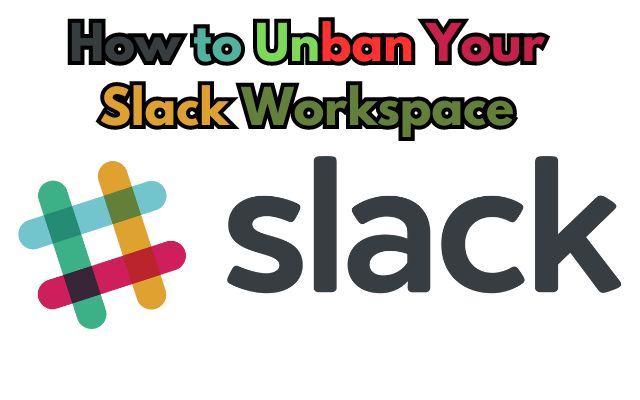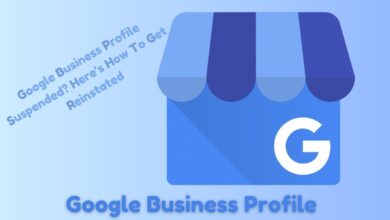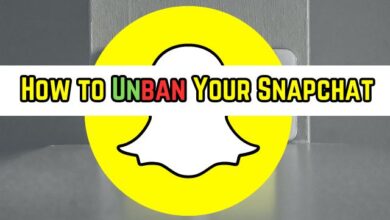How to Unban Your Slack Workspace: The Art of Professional Comeback
“Learn how to unban your Slack workspace and make a professional comeback with our comprehensive guide. Empower your team today!”

How to Unban Your Slack Workspace is a topic that has gained relevance in today’s digital workspace environment. Slack, a popular collaboration tool, is used by millions of professionals worldwide. However, there are instances when a workspace may get banned due to various reasons. This can disrupt the flow of communication and productivity within a team.
Understanding how to unban your Slack workspace and make a professional comeback is crucial. It not only helps in restoring the workspace but also aids in rebuilding trust and rapport within the team. This article aims to guide you through this process, providing practical steps and strategies to effectively unban your Slack workspace and ensure a successful professional comeback. Let’s embark on this journey of recovery and resurgence together.
Slack Workspace Ban
A Slack workspace ban is a situation where a user or a group of users are prevented from accessing a particular Slack workspace. This usually happens when the user violates Slack’s community guidelines or security policies.
Common reasons for a ban include spamming, harassment, sharing inappropriate content, or breaching data privacy rules. In some cases, a ban can also occur due to the misuse of third-party apps within the workspace.
Understanding the reason behind the ban is the first step towards unbanning your Slack workspace. It helps you identify what went wrong and how you can rectify it. This understanding is crucial as it forms the basis of your appeal to Slack support and your plan for a professional comeback.
Initial Steps Post-Ban
If you find your Slack workspace banned, it’s essential not to panic. The first step is to understand the reason behind the ban. Slack may ban a workspace for various reasons, including spamming, harassment, sharing inappropriate content, or breaching data privacy rules. In some cases, misuse of third-party apps within the workspace can also lead to a ban.
Once you’ve identified the reason for the ban, the next step is to contact Slack support. It’s crucial to communicate effectively and professionally, providing all necessary details and expressing your willingness to rectify any violations.
Remember, the goal is not just to get your workspace unbanned but also to ensure such incidents do not recur. Therefore, it’s important to take this as a learning experience and implement necessary measures to prevent future violations.
The Art of Communication
Effective communication is the cornerstone of any successful appeal process, especially when it comes to unbanning your Slack workspace. It’s not just about stating your case, but doing so in a way that is clear, respectful, and professional.
Firstly, it’s important to acknowledge the issue that led to the ban and express your understanding of the violation. This shows Slack support that you are aware of the rules and are willing to adhere to them.
Next, outline the steps you have taken or plan to take to rectify the issue. This could include changes in team behavior, stricter enforcement of Slack guidelines, or even the implementation of new policies.
Finally, ensure your appeal is solution-oriented. Instead of focusing on the ban’s negative impact, highlight how unbanning your workspace will lead to positive outcomes.
Remember, the goal is to convince Slack support that your workspace deserves a second chance and that the same issues will not recur.
Creating a Plan for Professional Comeback
Creating a plan for a professional comeback after a Slack workspace ban involves several key steps.
Firstly, it’s important to acknowledge the issue that led to the ban and express your understanding of the violation. This shows Slack support that you are aware of the rules and are willing to adhere to them.
Next, outline the steps you have taken or plan to take to rectify the issue. This could include changes in team behavior, stricter enforcement of Slack guidelines, or even the implementation of new policies.
A crucial part of your comeback plan should be preventing future bans. This involves understanding Slack’s security features and best practices. For instance, using two-factor authentication, verifying user emails and domains, managing Slack bots and apps carefully, and setting appropriate session durations are some of the measures that can enhance the security of your workspace.
Moreover, educating your team members about these practices and ensuring their adherence is equally important. Regular training sessions, reminders, and updates can help in this regard.
Lastly, maintaining open and regular communication with Slack support throughout this process can be beneficial. They can provide valuable guidance and assistance, making your journey towards a professional comeback smoother.
Remember, the goal is not just to get your workspace unbanned but also to ensure such incidents do not recur. Therefore, it’s important to take this as a learning experience and implement necessary measures to prevent future violations.
Preventing Future Bans
Preventing future bans on your Slack workspace is crucial for maintaining a smooth and uninterrupted workflow. Here are some strategies to ensure your workspace remains secure and compliant:
- Use Two-Factor Authentication (2FA): This adds an extra layer of security to your workspace. Even if a password is compromised, access to Slack won’t be granted unless the person signing in is verified from their device.
- Verify User Emails and Domains: This ensures that only authorized individuals have access to your workspace.
- Manage Apps with Care: By default, all members can install apps to their workspace. Workspace Owners can restrict permissions for how members can install and use apps.
- Limit Access to Your Workspace: Only invite people you know and trust. Workspace Owners, Workspace Admins, and members can send invitations.
- Deactivate Old Accounts: Don’t forget to deactivate a member’s account when they leave.
By following these best practices, you can significantly reduce the risk of future bans and ensure a secure and harmonious Slack workspace.
Case Study: Successful Unban and Comeback
Let’s look at a real-life example of a successful unban and professional comeback on Slack.
A company had their Slack workspace banned due to a misunderstanding about the use of third-party apps. The ban disrupted their workflow and caused significant communication challenges.
However, instead of panicking, the company took immediate action. They contacted Slack support, acknowledged the issue, and expressed their willingness to rectify the violation. They also outlined the steps they had taken to prevent such incidents in the future.
Their appeal was successful, and their workspace was unbanned. But the company didn’t stop there. They used this experience as a learning opportunity and implemented stricter guidelines for the use of third-party apps.
They also conducted regular training sessions to educate their team members about Slack’s policies and best practices. This proactive approach not only prevented future bans but also improved their team’s overall communication and productivity.
This case study illustrates that with the right approach and mindset, it’s possible to turn a setback like a Slack workspace ban into an opportunity for growth and improvement.
- How to Unban Your WeChat Account: A Comprehensive Guide
- How to Unban Your Signal Account: Mastering the Winning Formula
- How to Unban a User from a Facebook Group
FAQ: How to Unban Your Slack Workspace
How do I reactivate my Slack workspace?
If you’re the owner of a deactivated Slack workspace, you can reactivate it by signing in and following the prompts to reactivate. If you’re not the owner, you’ll need to contact the owner or an admin to reactivate the workspace.
How do I recover my Slack workspace?
If your workspace was deactivated, the owner or an admin can reactivate it. If it was deleted, unfortunately, it cannot be recovered. It’s recommended to regularly back up important data.
Why was my Slack deactivated?
A Slack workspace can be deactivated for several reasons, including violation of Slack’s community guidelines or security policies, or at the request of the workspace owner or admin.
Can you be removed from a Slack workspace?
Yes, a workspace owner or admin can remove any member from a Slack workspace. If you’ve been removed, you’ll need to be re-invited to join again.
How do I make Slack permanently active?
Slack automatically changes your status to “away” when you’re inactive. To remain active, keep the Slack app open and periodically interact with it. However, it’s important to respect work-life balance and set appropriate boundaries.
How do I access my Slack workspace admin?
If you’re an admin, you can access the admin settings by clicking on your workspace name in the top left corner, then selecting “Settings & administration.” If you’re not an admin, you’ll need to contact one for help with admin-related tasks.
Can deleted Slack be recovered?
If a message or file was deleted, it cannot be recovered unless it was previously backed up. Workspace owners and admins can set up data exports and backups to preserve data.
How do I contact Slack customer service?
You can contact Slack customer service through the “Contact Us” page on the Slack website. They offer support via email and have a comprehensive Help Center with answers to common questions.
What happens when you leave a Slack workspace?
When you leave a Slack workspace, you will no longer be able to access the messages, files, or channels in that workspace. If you want to rejoin, you’ll need to be re-invited by an admin or owner.
Conclusion: Triumphing Over Slack Workspace Bans
Unbanning your Slack workspace and making a professional comeback is not just about rectifying the issue at hand. It’s about learning from the experience, implementing necessary changes, and ensuring such incidents do not recur.
From understanding the reason behind the ban to communicating effectively with Slack support, every step plays a crucial role in this journey. Moreover, preventing future bans by adhering to Slack’s policies and best practices is equally important.
Remember, a ban is not the end. It’s an opportunity for growth and improvement. With the right approach and mindset, you can turn this setback into a stepping stone towards a successful professional comeback.
We hope this article has provided you with valuable insights on how to unban your Slack workspace and make a professional comeback. Good luck on your journey!.




